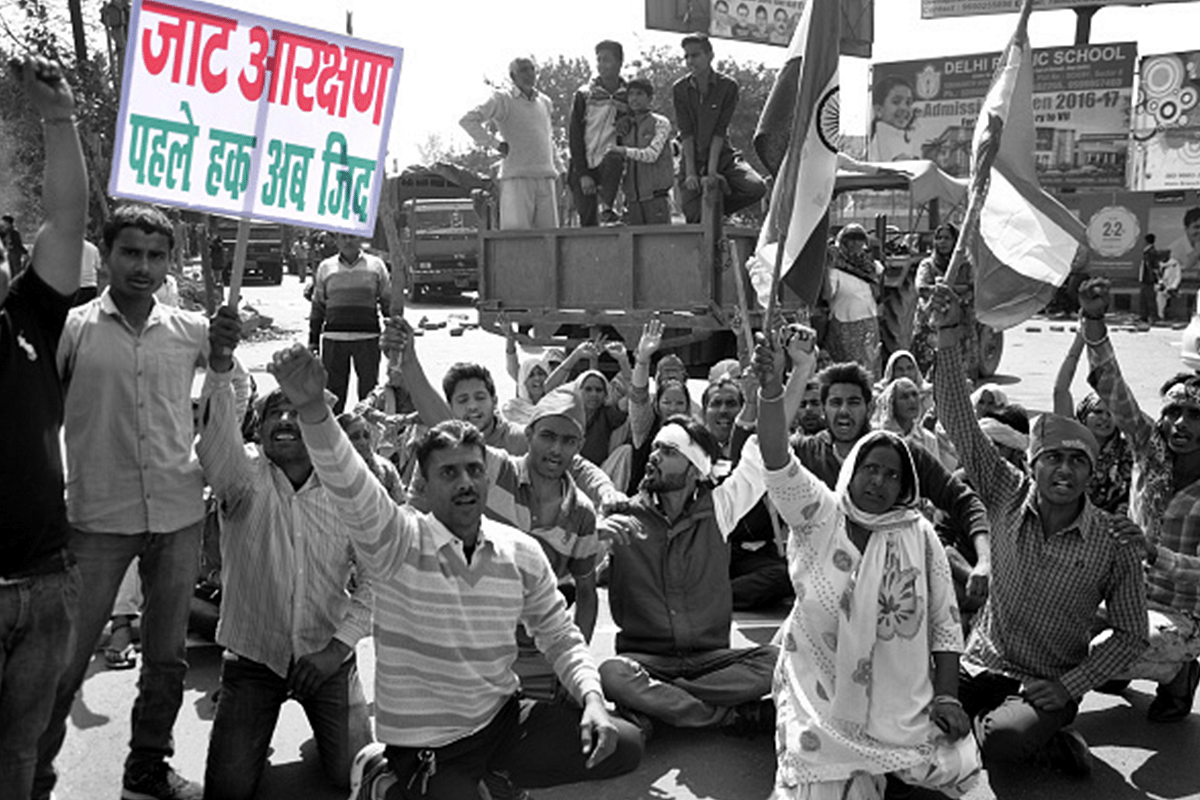Politics
Flashback: How Haryana Police Dealt With The Ram Rahim And Jat Quota Protests
- Even in Uttar Pradesh, two months ago, the state police came down swift and hard on the anti-CAA crowd which resorted to violence.

The protests for Jat quota
Many areas in the north-east part of Delhi are under lockdown after anti-CAA protesters came on the streets and became violent. The visuals of arson and torching of public and private property have enraged the common citizens.
Seven people including one cop have lost their lives.
The Delhi Police has come under severe criticism for being soft in dealing with anti-CAA protesters. In December too, Muslim majority areas such as Seelampur saw violence and arson.
An important road link in Shaheen Bagh which connects the capital to neighbouring Noida is under occupation by protesters for the last two months.
It has caused inconvenience to thousands of commuters who have to take the longer route to work.
But Delhi Police has not cleared the road. Nor has it cracked down on violent protesters with the force that’s needed. The latest wave of violence in the national capital is perhaps a result of weakness shown by the security forces which has emboldened the anarchists.
This is in stark contrast to how police forces have dealt with violent protesters in recent times.
The Ram Rahim Singh violence
In August 2017, when Ram Rahim Singh of Dera Sacha Sauda was convicted of rape of his two female followers, his followers who had gathered in Panchkula, Haryana, went on a rampage.
While the administration failed in stopping his supporters reaching Panchkula in droves, it didn’t shy away from cracking down heavily on them when they indulged in violence and started setting fire to public property.
In the resulting police action, more than 40 people died, 32 of them in Panchkula chiefly due to police firing. The casualty figure was high but riots were controlled in a matter of hours.
The administration had prepared well in anticipation of mischief and deployed 97 Central Reserve Police Force (CRPF) companies; 16 of Rapid Action Force; 37 of Sashastra Seema Bal; 12 of Indo-Tibetan Border Police and 21 of Border Security Force companies.
The Jat agitation
In 2016, an agitation for Jat quota took place in Haryana.
When the protesters started blocking key roads and highways, the administration went to great lengths to clear the roads.
In fact, in an attempt to clear one such key road, the police used force which set in motion a series of reactions which spiraled out of control.
Protesters who were peaceful till then turned violent and started torching properties indiscriminately in the cities.
This is in start contrast to Shaheen Bagh where no attempts have been made so far to clear such an important road link off protesters for last two months.
Over 30 Jat protesters were killed by in firing by security forces in 2016. Over 12,000 paramilitary troops were deployed to control the situation.
Similar stories of police crackdown were seen in Gujarat during the Patel quota agitation too.
In Uttar Pradesh, when anti-CAA protesters turned violent in December and January, the Yogi Adityanath government came down heavily on rioters and booked thousands of them in different cities and moved quickly to attach properties of those who were found indulging in violence and arson.
Given this history of police sternly dealing with violent protesters in neighbouring states of Haryana and Uttar Pradesh, Delhi Police appears weak.
One of its cop is dead and six civilians have died.
Delhi Police must act to control the violence and rioting and it must do so soon. It can’t afford to allow anarchists free run in the national capital. It has emboldened them enough.
Support Swarajya's 50 Ground Reports Project & Sponsor A Story
Every general election Swarajya does a 50 ground reports project.
Aimed only at serious readers and those who appreciate the nuances of political undercurrents, the project provides a sense of India's electoral landscape. As you know, these reports are produced after considerable investment of travel, time and effort on the ground.
This time too we've kicked off the project in style and have covered over 30 constituencies already. If you're someone who appreciates such work and have enjoyed our coverage please consider sponsoring a ground report for just Rs 2999 to Rs 19,999 - it goes a long way in helping us produce more quality reportage.
You can also back this project by becoming a subscriber for as little as Rs 999 - so do click on this links and choose a plan that suits you and back us.
Click below to contribute.
Latest